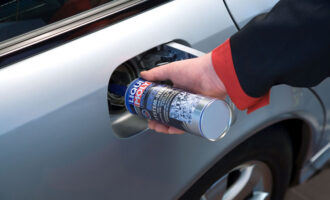A new JASO motorcycle lube spec smoothens the way
by Hank Hogan
Motorcycles could face an easier road ahead, thanks to the late April release of a new lubricant specification, JASO T 903:2016. A product of the Japanese Standards Organization (JASO), the new specification replaces a 2011 version. Among other changes, the 2016 spec implements improved testing to categorise lubricants into high friction (MA/MA1) or low friction (MB).
The new test has been reported to be tougher than the previous one. But, that is not the case, said Kazuya Asao, administrator of Standards for Road Vehicles for the Society of Automotive Engineers of Japan (JSAE), which was also involved in developing the new JASO standard. “With regard to the friction test, we changed the test method and the threshold to classify it definitely. But it has not become more severe,” he said. Because Japan is a major motorcycle manufacturer, the JASO specification is widely adopted around the world.
As for reports that the new spec will require re-testing or re-certification of current lubricants, that is a matter for each formulator and vendor to decide, Asao said. Based on market conditions, technical or specification requirements and other factors, lube companies can assess whether or not to get existing oils re-certified to meet the new spec, which was released on April 30, 2016. Oil marketers have until Oct. 1, 2016 to file certifications for either the 2011 or 2016 standard.
Motorcycles confront some of the same issues that four-wheelers do: increasing power produced by downsized engines, greater fuel efficiency demands and reduced emissions limits. Some two-wheelers must tackle these problems while saddled with some unique constraints. For instance, motorcycle oils do double duty in a wet-clutch configuration. In that case, oils are used in the engine as well as the transmission and clutch. One of the resulting trade-offs has to do with viscosity. Lower friction lubricants boost fuel economy, but a clutch needs higher friction to work properly.
The JASO specification splits motorcycle lubricants into two categories: low- and high-friction. One reason why the standard was revised was to better separate the two. In the 2011 spec, it was possible for a low friction (MB) oil to be classified as high friction (MA) oil. The new standard eliminates any overlap.
MA lubricants are suitable for operations with a wet clutch, while MB lubricants are suitable for automatic transmissions, where the oil has no involvement with the clutch, according to the Lubrizol website. As for MA1 and MA2 lubes, the latter offers a higher level of friction performance, Lubrizol stated. The MA and MB categories are separated by three performance areas: dynamic friction, static friction and stop time.
 The specification update could also result in greater stability in MB formulation packages. This is because lubricants “should need less friction modifier to meet JASO T 903:2016 requirements,” according to an Infineum Insight article.
The specification update could also result in greater stability in MB formulation packages. This is because lubricants “should need less friction modifier to meet JASO T 903:2016 requirements,” according to an Infineum Insight article.
There are some items, though, that are not in the new standard. Most importantly, there is no gear-pitting test. According to Infineum, most motorcycle oils are SAE 10W-40, but there is growing interest in lower viscosity grades. That will make the protection of gears, clutch and engine more difficult, and so there is an increasing need for a reliable method to gauge gear pitting.
“We think that the evaluation and examination of the [gear] pitting will become very important in the future,” said Asao. “We are now trying to develop the testing method.”
The gear-pitting test did not make it into the 2016 specification due to a lack of time, he said. An evaluation method should be ready for the next iteration of the JASO standard, to be released in 2021.
As for the future, the next version of the specification could include other additional tests and requirements. Given the demands to improve fuel efficiency, which is a way to reduce carbon emissions, the most likely scenario is that motorcycle OEMs will continue to explore lower viscosity grades. That will likely mean changes to JASO T 903, with the intent of ensuring adequate component protection and lubricant life.
“Because they do not have any problem now, we did not incorporate it in a standard, but both a one-way clutch evaluation and an oil seal evaluation may be necessary, depending on a technical trend of the future oil,” Asao said.







